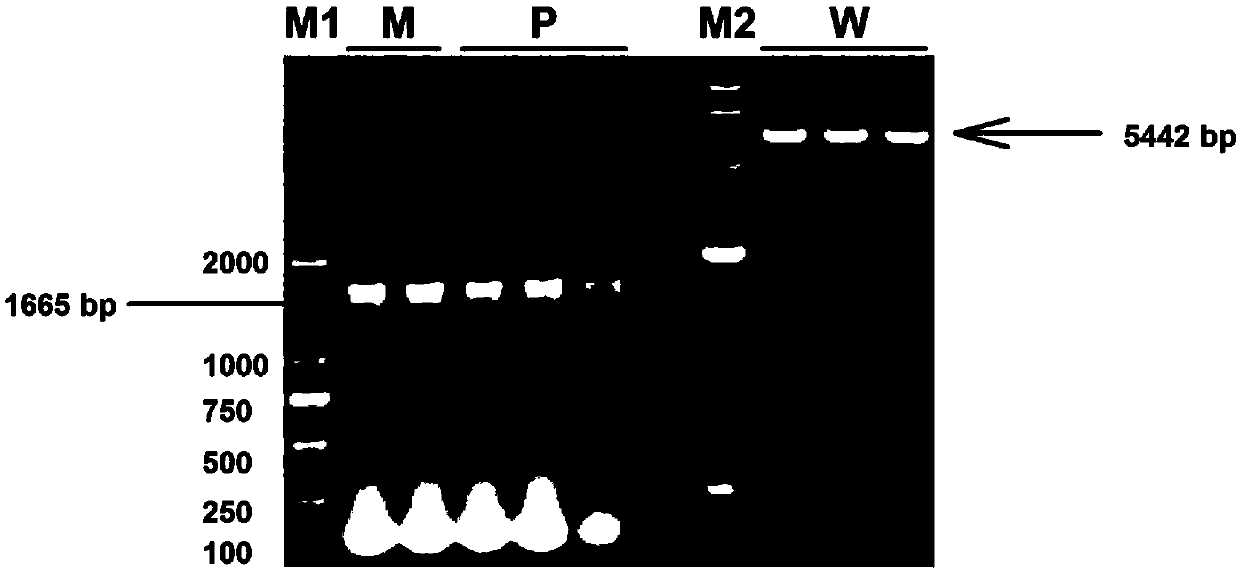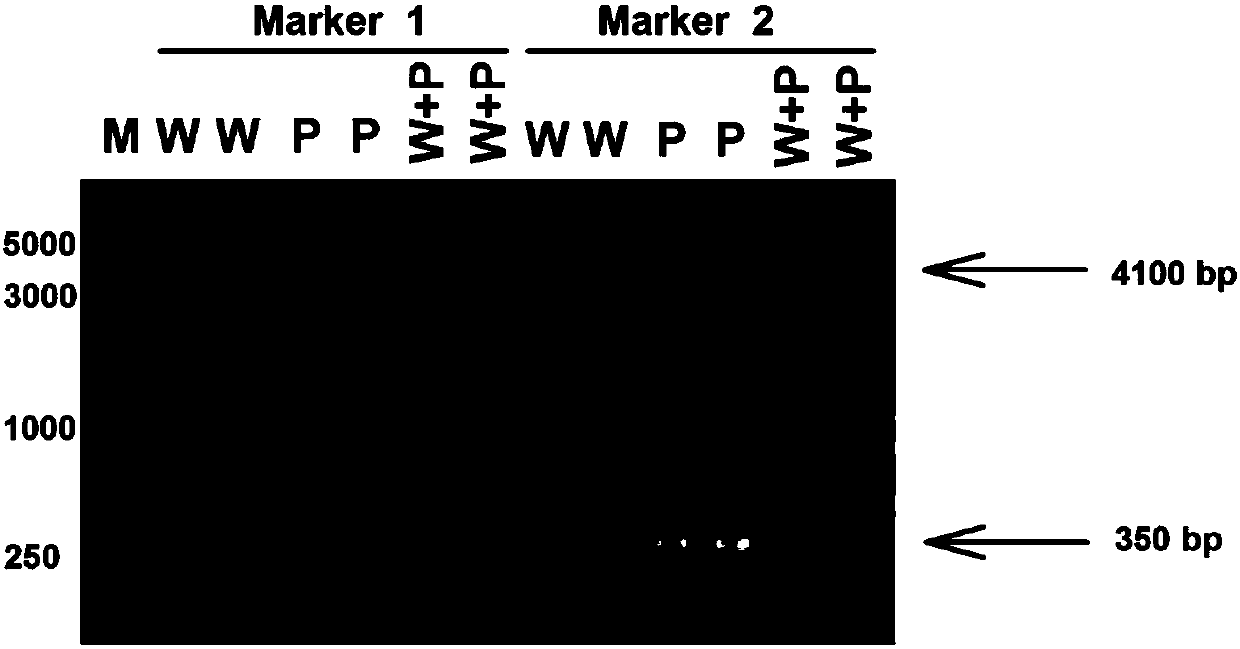Plant-anthocyanin synthesis control gene and application thereof
An anthocyanin and plant technology, applied in the fields of vegetable breeding and molecular genetics, can solve the problems of time-consuming and laborious, destructive germplasm materials, delaying the breeding process, etc., and achieve the effects of high detection accuracy, low cost and simple operation
- Summary
- Abstract
- Description
- Claims
- Application Information
AI Technical Summary
Problems solved by technology
Method used
Image
Examples
Embodiment 1
[0034] Embodiment 1: Extraction of Chinese cabbage genome total RNA
[0035] 1) Grind the material stored in ultra-low temperature with liquid nitrogen, add about 50 mg of the ground powder, add 1 mL of Bizol solution, mix vigorously, let stand on ice for 15 min; centrifuge at 12000×g for 15 min at 4°C, take the supernatant, add 200 μL of chloroform, Cover the tube cap, shake vigorously, and let stand on ice for 15 minutes; centrifuge at 12,000×g for 15 minutes at 4°C, carefully pipette the supernatant into another centrifuge tube, add an equal volume of pre-cooled (-20°C) isopropanol, up and down Mix by inverting several times, and precipitate at -20°C for more than 2 hours;
[0036] 2) Centrifuge at 10000×g for 10 min at 4°C. Discard the supernatant, add 1mL 75% ethanol (depleted enzyme-free ddH 2 O preparation, that is, containing 0.1% DEPC, obtained by sterilizing for 40 minutes) wash the precipitate twice; discard the supernatant, air-dry the RNA on the ultra-clean work...
Embodiment 2
[0039] Embodiment 2: Extraction of Chinese cabbage genome total DNA
[0040] 1) Take 0.2g fresh tender leaves of Chinese cabbage with main veins removed, stuff them into a 2mL centrifuge tube with steel balls (steel balls need to be cleaned with 75% alcohol by mass fraction), put them into liquid nitrogen for quick freezing, and use tissue grinding Grind into powder;
[0041] 2) Add 700 μl of CTAB extract (CTAB: 2%, Tris-HCl (pH=8.0): 100 mmol / L, EDTA: 20 mmol / L, NaCl: 1.4 mol / L) preheated at 65°C to the centrifuge tube, Then add 10 μL of β-mercaptoethanol and mix quickly;
[0042] 3) Then put the centrifuge tube into an oven at 65°C, shake it every 5-10 minutes, and incubate for 45 minutes;
[0043] 4) Take out the centrifuge tube, add an equal volume of a mixture of phenol: chloroform: isoamyl alcohol (25:24:1), shake well for 15 minutes, and centrifuge at 10000 r / min for 10 minutes at room temperature;
[0044] 5) Transfer the upper liquid phase (about 700 μl) to another...
Embodiment 3
[0050] Embodiment 3: PCR amplification and gene detection of Chinese cabbage purple gene
[0051] Using the total DNA in Example 2 as a template, the purple gene of purple heart Chinese cabbage, the gene of purple traits in the parent of Porphyra stalk and the allele in white leafy Chinese cabbage and the detection of the gene were respectively obtained.
[0052] 1) 20 μl PCR reaction system: 2 μl of 50ng / μl template DNA, 10 μl of 2×Taq Master Mix, 1 μl of 10 μM upstream and downstream primers, supplement the reaction system with sterile deionized water to 20 μl.
[0053] The primer sequences are:
[0054] Upstream primer: 5'-ATGGAGGGTTCGTCCCAAG-3'
[0055] Downstream primer: 5'-TCAAGTTCCAGTTTCTCTCATCC-3'
[0056] 2) The PCR amplification reaction is carried out on a PCR instrument
[0057] The temperature and reaction conditions were as follows: pre-denaturation at 94°C for 3 min; then denaturation at 94°C for 30 s, annealing at 58°C for 30 s, and extension at 72°C for a t...
PUM
 Login to View More
Login to View More Abstract
Description
Claims
Application Information
 Login to View More
Login to View More - R&D
- Intellectual Property
- Life Sciences
- Materials
- Tech Scout
- Unparalleled Data Quality
- Higher Quality Content
- 60% Fewer Hallucinations
Browse by: Latest US Patents, China's latest patents, Technical Efficacy Thesaurus, Application Domain, Technology Topic, Popular Technical Reports.
© 2025 PatSnap. All rights reserved.Legal|Privacy policy|Modern Slavery Act Transparency Statement|Sitemap|About US| Contact US: help@patsnap.com



